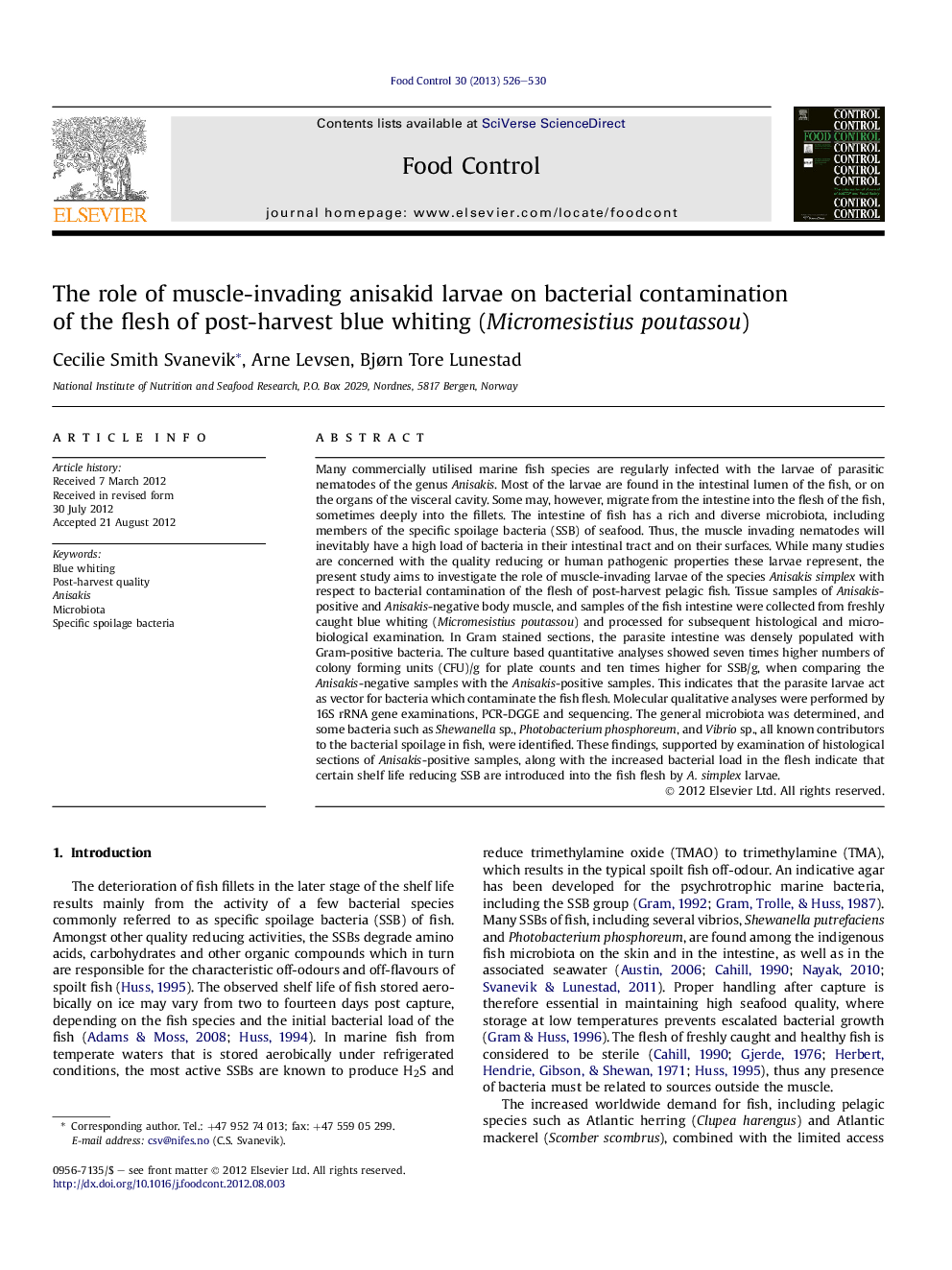| کد مقاله | کد نشریه | سال انتشار | مقاله انگلیسی | نسخه تمام متن |
|---|---|---|---|---|
| 4559461 | 1628426 | 2013 | 5 صفحه PDF | دانلود رایگان |

Many commercially utilised marine fish species are regularly infected with the larvae of parasitic nematodes of the genus Anisakis. Most of the larvae are found in the intestinal lumen of the fish, or on the organs of the visceral cavity. Some may, however, migrate from the intestine into the flesh of the fish, sometimes deeply into the fillets. The intestine of fish has a rich and diverse microbiota, including members of the specific spoilage bacteria (SSB) of seafood. Thus, the muscle invading nematodes will inevitably have a high load of bacteria in their intestinal tract and on their surfaces. While many studies are concerned with the quality reducing or human pathogenic properties these larvae represent, the present study aims to investigate the role of muscle-invading larvae of the species Anisakis simplex with respect to bacterial contamination of the flesh of post-harvest pelagic fish. Tissue samples of Anisakis-positive and Anisakis-negative body muscle, and samples of the fish intestine were collected from freshly caught blue whiting (Micromesistius poutassou) and processed for subsequent histological and microbiological examination. In Gram stained sections, the parasite intestine was densely populated with Gram-positive bacteria. The culture based quantitative analyses showed seven times higher numbers of colony forming units (CFU)/g for plate counts and ten times higher for SSB/g, when comparing the Anisakis-negative samples with the Anisakis-positive samples. This indicates that the parasite larvae act as vector for bacteria which contaminate the fish flesh. Molecular qualitative analyses were performed by 16S rRNA gene examinations, PCR-DGGE and sequencing. The general microbiota was determined, and some bacteria such as Shewanella sp., Photobacterium phosphoreum, and Vibrio sp., all known contributors to the bacterial spoilage in fish, were identified. These findings, supported by examination of histological sections of Anisakis-positive samples, along with the increased bacterial load in the flesh indicate that certain shelf life reducing SSB are introduced into the fish flesh by A. simplex larvae.
Journal: Food Control - Volume 30, Issue 2, April 2013, Pages 526–530